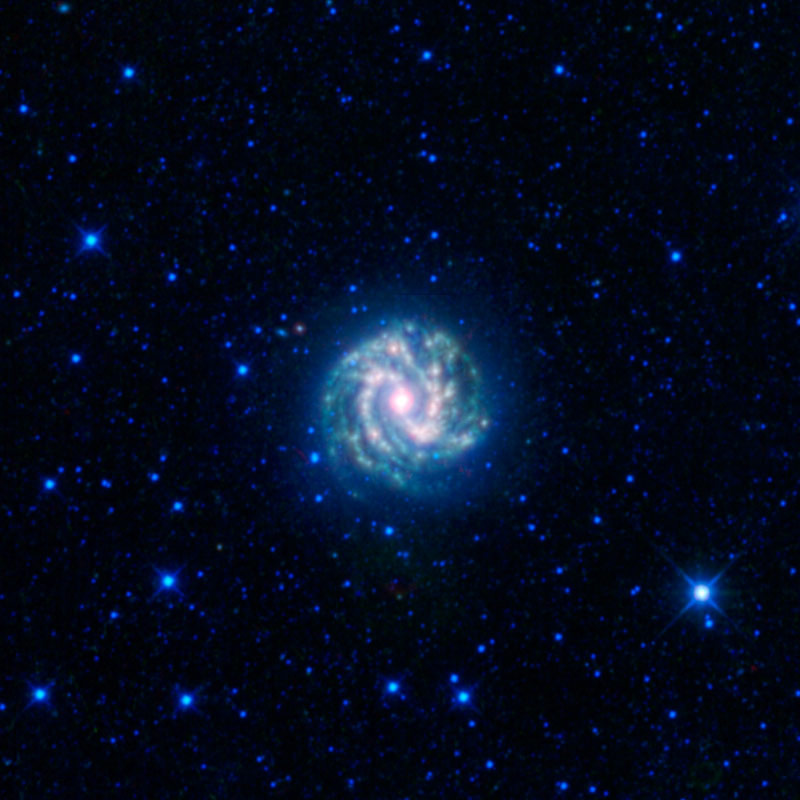Southern Pinwheel Galaxy Shines In New Photo

A new phototaken by a NASA space telescope has revealed the brilliant southern Pinwheel Galaxyin a new light, though it?s a cosmic half-pint when compared to our own MilkyWay.
The new infraredgalaxy photo depicts the Messier 83 (M83), a spiral disc that faces up spot-onfrom 15 million light -years away in the constellation Hydra. But the galaxy isonly 55,500 light-years across. Our own Milky Way galaxy is nearly twice aswide. ??
The photowas taken by NASA's Wide-field Infrared Survey Explorer, an infrared spacetelescope launched in December 2009 to search for galaxies, asteroids and otherobjects that shine brightest in the infrared range of the light spectrum. [MoreWISE telescope photos.]
M83 is alsoknown as the southernPinwheel Galaxy because of its location in the southern hemisphere. Anotherwell-known Pinwheel Galaxy is an object known as M101, a spiral galaxy that isvisible in the northern hemisphere in the constellation Ursa Major.
Like theMilky Way, the stars, dust and gas in M83 are primarily found in the galaxy'slong, sweeping arms that twist inside a thin plane. This galactic plane is visiblebecause of M83 appears face-on when observed from Earth, rather than edgewise liketheMilky Way. ??????
Higher ratesof star formation exist in M83's arms when compared to the rest of the disksince the material and stars there are denser than elsewhere. In the new WISEimage, red light depicts very bright, short-lived stars, and green light showsdust. Both are warm emissions, in contrast to the blue and cyan-colored lightfrom most of the other stars seen. ?
From thecenter protrudes a bulge of dust and stars, shaped partially shaped like a sphereand partially like a bar. The structure puts M83 the barred spiral galaxycategory, according to a WISE mission announcement.
Breaking space news, the latest updates on rocket launches, skywatching events and more!
- Gallery- Amazing Galaxies
- WISETelescope's First Cosmic Photos
- HubbleGives Best Ever View of Southern Pinwheel Galaxy
Zoe Macintosh is a science writer who covered human spaceflight, astronomy and science for Space.com in 2010. She also covered general science for Space.com's sister site Live Science. Zoe studied English literature and physics at Smith College, where she also wrote for the Smith Sophian. Her work has also appeared in the National Association of Science Writers website.
